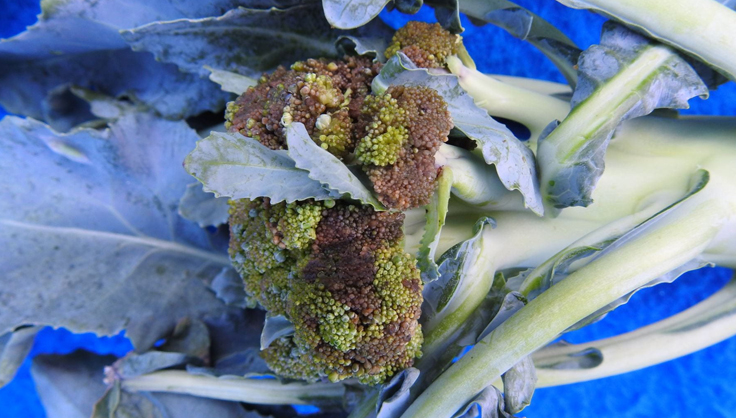Bacterial Soft Rot
 Photo Credit: Margaret Tuttle McGrath, Cornell University
Photo Credit: Margaret Tuttle McGrath, Cornell UniversitySoft, water-soaked areas on leaves or fruit are often a symptom of bacterial soft rot. Many types of vegetables are vulnerable, including broccoli, cabbage, lettuce, onions, carrots, tomatoes, potatoes and peppers. When soft rot bacteria infect broccoli, lettuce, and cabbage, the heads rot. Fruit of infected pepper and tomato plants becomes soft and brown. Carrots rot near the crown; onions soften first at the neck, and the rot eventually spreads into the bulb. Potato tubers become soft and mushy after harvest. In all cases, a foul odor is evident.
The bacterium overwinters in the soil on plant debris. Warm, humid conditions favor its spread. Infection often enters the plant via a cut, bruise, or insect damage.
Prevention and Control
- Choose disease-resistant varieties, such as ?Arcadia? and ?Marathon? broccoli.
- Add compost to your soil to boost populations of beneficial bacteria that compete against soft rot bacteria.
- Use drip irrigation or soaker hoses rather than overhead watering to keep foliage and fruits dry.
- Cultivate around plants with care and handle plants gently during harvest to avoid damaging tissues.
- Clean up plant debris in fall and rotate crops.
Print this Article:
Get the Dirt
Stay up to date on new articles and advice. Please fill out the information below.
